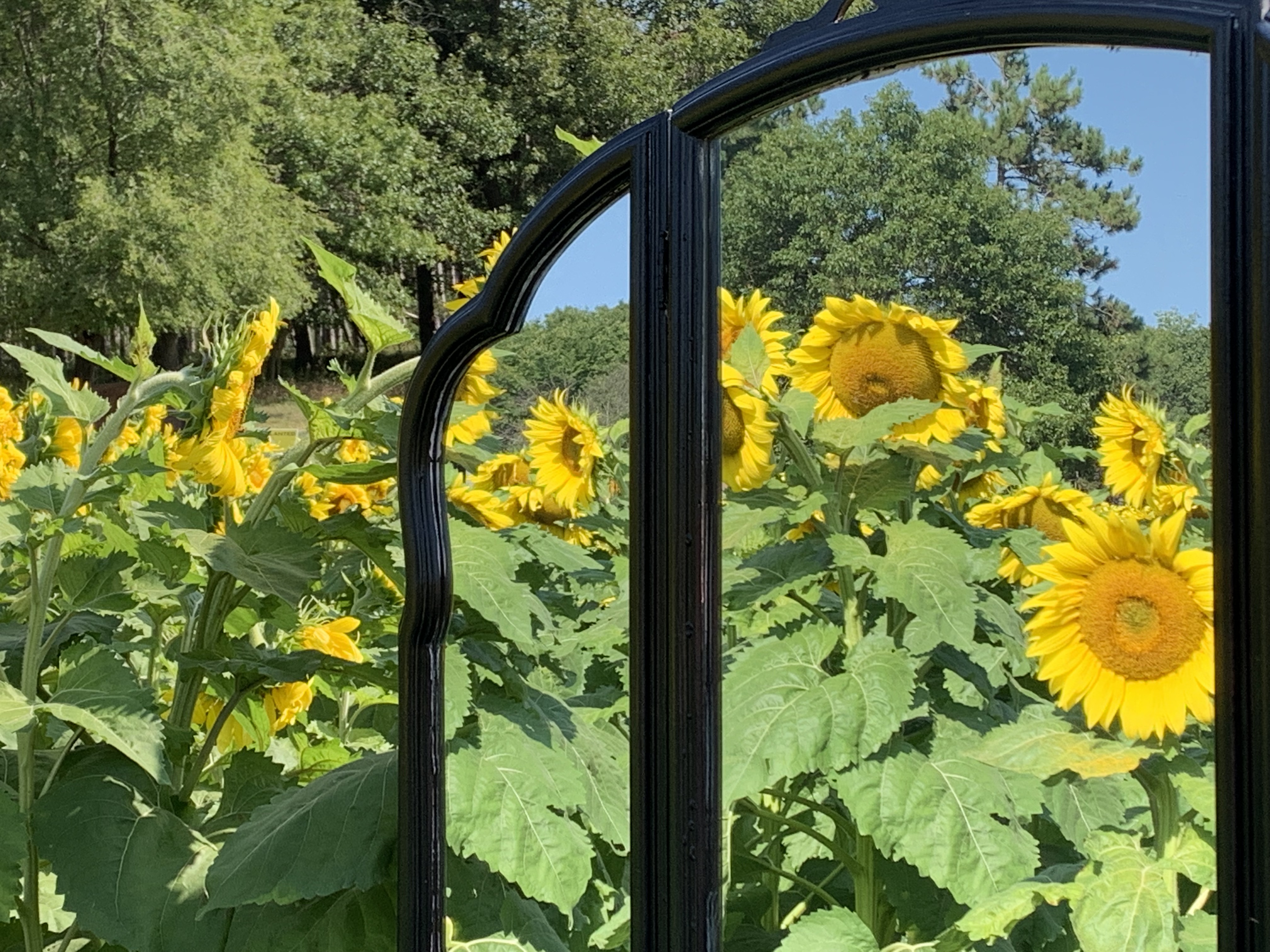
Refinishing a tabletop is really quite easy.
You may have a piece of furniture that, on the whole, is in pretty good condition — except for the top. Scratches, water rings, burn marks, and other nasties can mar the surface of your furniture. It’s not difficult to refinish your top. Follow along as I freshen up a couple of tables to see how it’s done.

Technique One: Stained Finish
There are essentially two ways to remove the original finish on a tabletop: chemical and physical. I pride myself on being as eco-friendly as possible in my workshop, so I avoid chemicals whenever I can. I prefer to strip surfaces manually. In this case, I used 120-grit sandpaper for the first pass to sand down to bare wood. Then I went over the surface again with finer 320-grit to make the finish silky smooth.

Make sure that you sand away any visible scratches, burns or water marks marring the surface. If you don’t, they’ll capture the new stain and be as noticeable as before. This scratch extended several inches outside the circle but is in the process of being sanded away. There may be times when the scarring on an item is too deep to completely eliminate without wood filler, but you can usually correct minor damage this way.

Ah, a nice fresh slate to start work! Before slapping on the stain, treat the bare wood with a pre-stain conditioner. This introduces moisture back into the wood, allowing the stain to penetrate more evenly. I use Minwax® stains for the furniture I refinish, and they make a pre-stain conditioner that is simple to apply. Just rub it into the surface of the wood with a rag and wipe off any excess after 5-15 minutes. But be ready to go with your stain because Minwax® recommends applying the stain within two hours after conditioning.

If you’re refinishing only the top, you’ll need to find a close match to the color of the rest of the piece (unless you’re getting creative and going with another color altogether). Many hardware stores will have samples of wood on display demonstrating the final color of a stain once applied. Note: these are approximations! Different woods take stains differently. If you have somewhere on the piece where you can test colors, that’s best. Here, I tested my options on the raw wood of the underside of the table and selected the color that matched.

Just like the conditioner, apply the stain with a rag (gloves recommended!). Work in the direction of the wood grain. You don’t need a lot of stain on your rag — a little goes a long way. After the recommended time on the can, wipe off any excess. In general, the longer the stain stays on before buffing, the darker it will set. However, if the dry time is complete and you want the color to be darker, you can apply a second coat. Once you are done, be certain to discard your application materials (rags, etc.) safely per the instructions on the can as many products are flammable. I place my items in a plastic sealable bag full of water before discarding.

Be sure to add a topcoat to your furniture to protect your new finish. I typically use Minwax® Polycrylic in a clear satin finish — not too glossy, not too matte. Apply the topcoat in the direction of the wood grain in a slow, smooth motion to avoid bubbles or streaks. Here, I’m trying a new palm sponge that many refinishers use. It was fine, but I think a regular sponge brush works as well. Two to three coats are best. Sand lightly with a fine grit (220 or higher) between layers to help the next coat adhere properly.

Technique Two: Natural Finish
If you are refinishing the top of an item that will be left with a natural finish, like this Danish teak table, the technique is even easier. I refreshed this in 10 minutes, start to finish!

I sanded down to bare wood past all the water stains with 220-grit sandpaper. Then I applied Wise Owl® furniture salve in the direction of the wood grain. (I love that my workshop smells like lemon-verbena for days afterward!) For more on this product and its application, see my prior post: Furniture Salve: From Dry to Dazzling After allowing the product to soak in for a few minutes, I then buffed the surface, removing any excess. And that’s it! The salve has a protective, water-resistant quality that eliminates the need for a topcoat.


It’s as simple as that to get a nice fresh surface for your furniture!
Before you abandon hope for a piece of furniture with a damaged top, try refinishing the surface to give it a second chance.
Check back next week for more from my workshop. Use my contact page for any Qs about items on my blog and follow me on Instagram (@serendipitysequelsmn).

